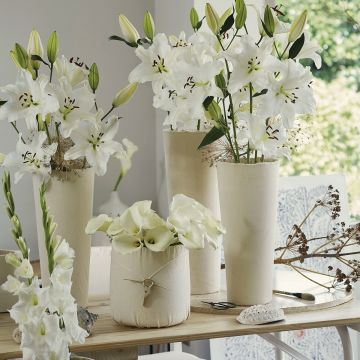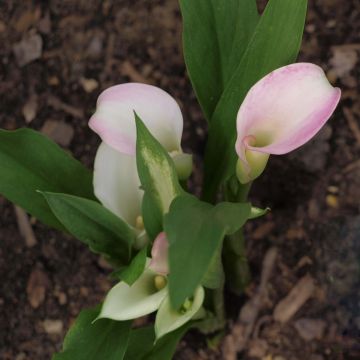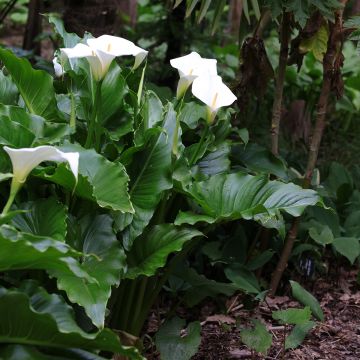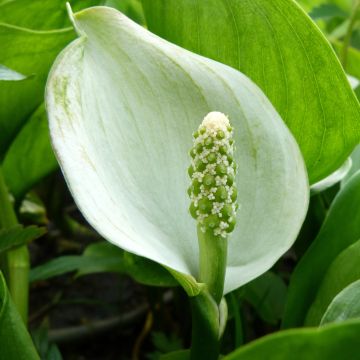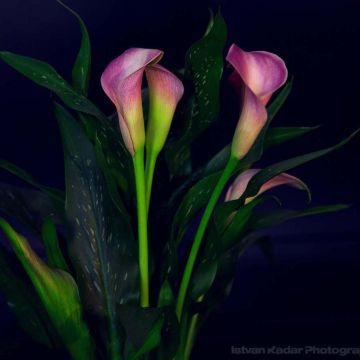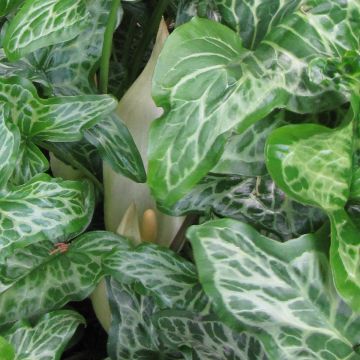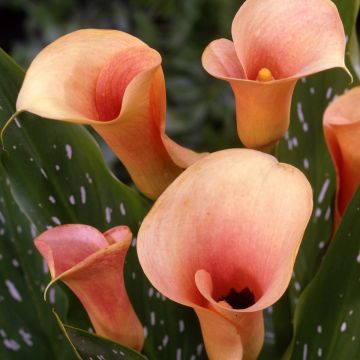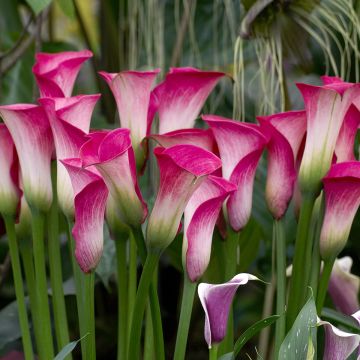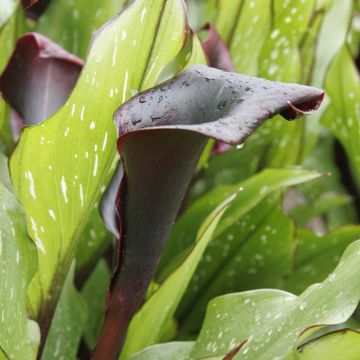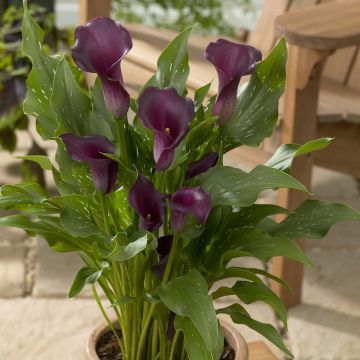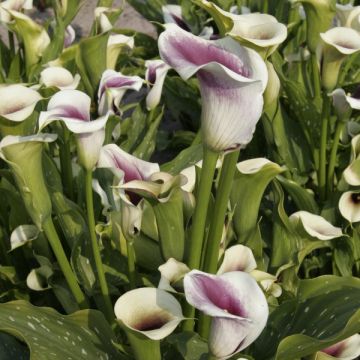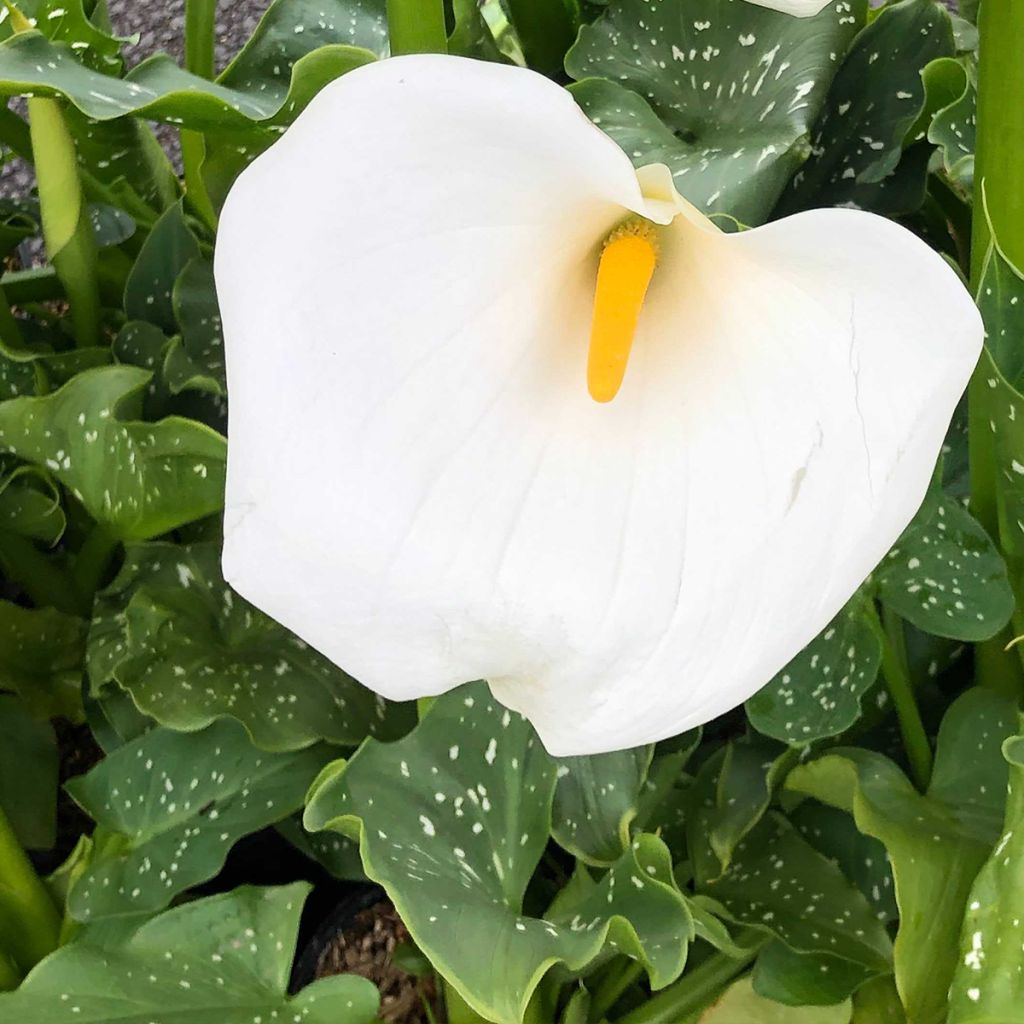

Zantedeschia aethiopica Himalaya - Arum-lily
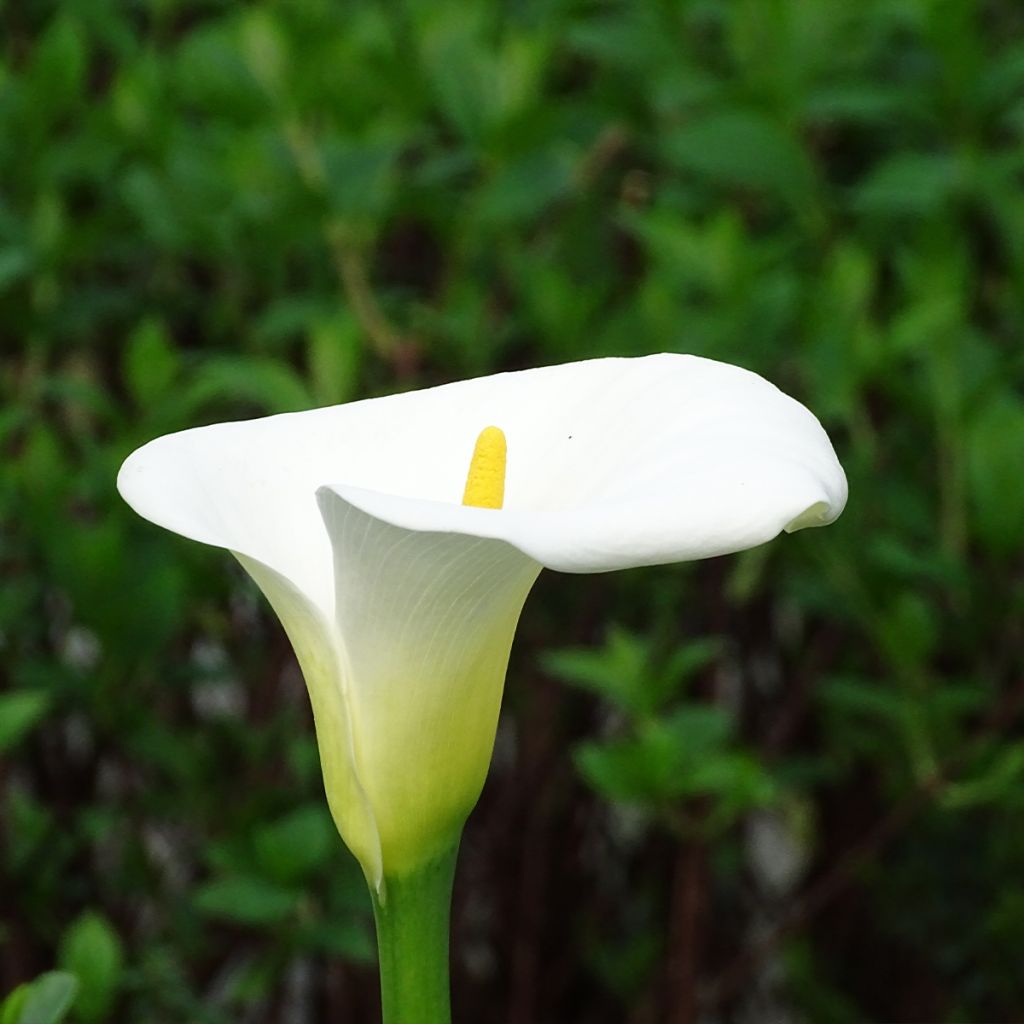

Zantedeschia aethiopica Himalaya - Arum-lily
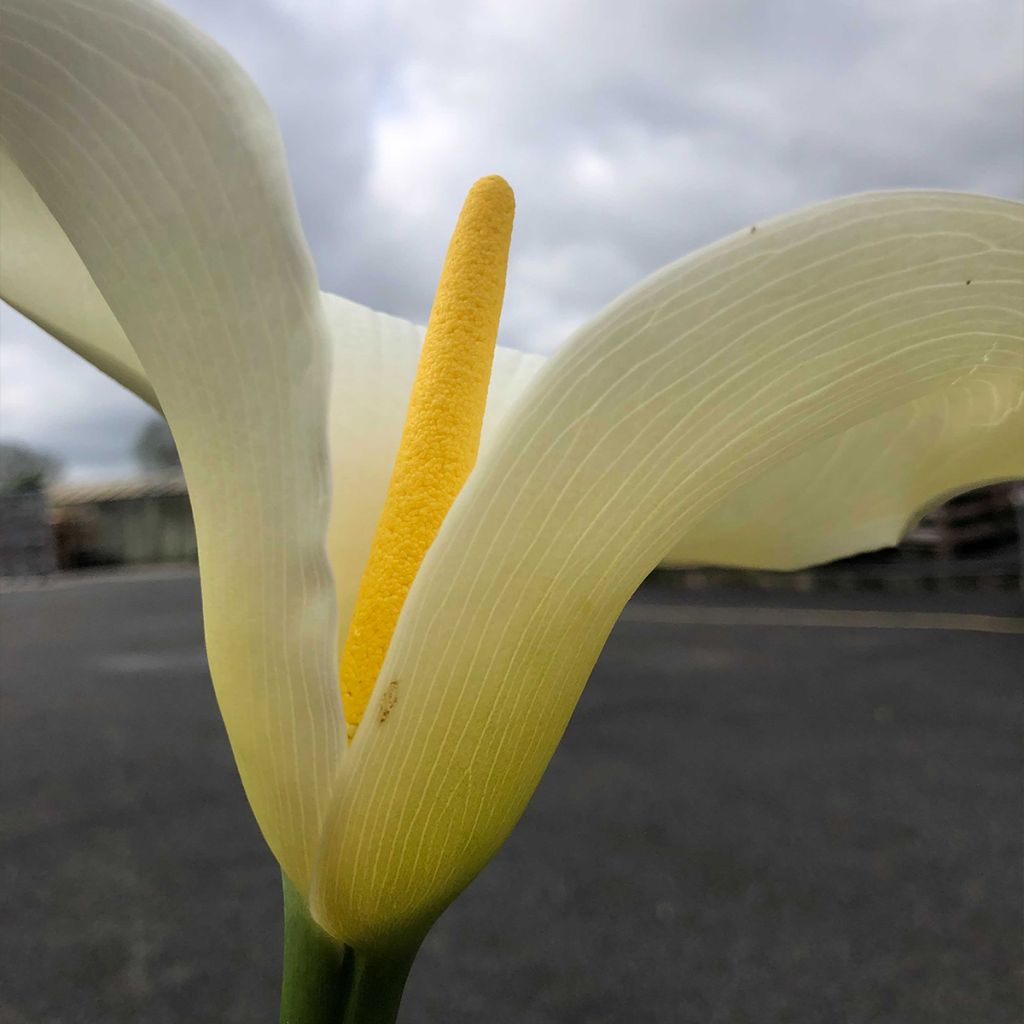

Zantedeschia aethiopica Himalaya - Arum-lily
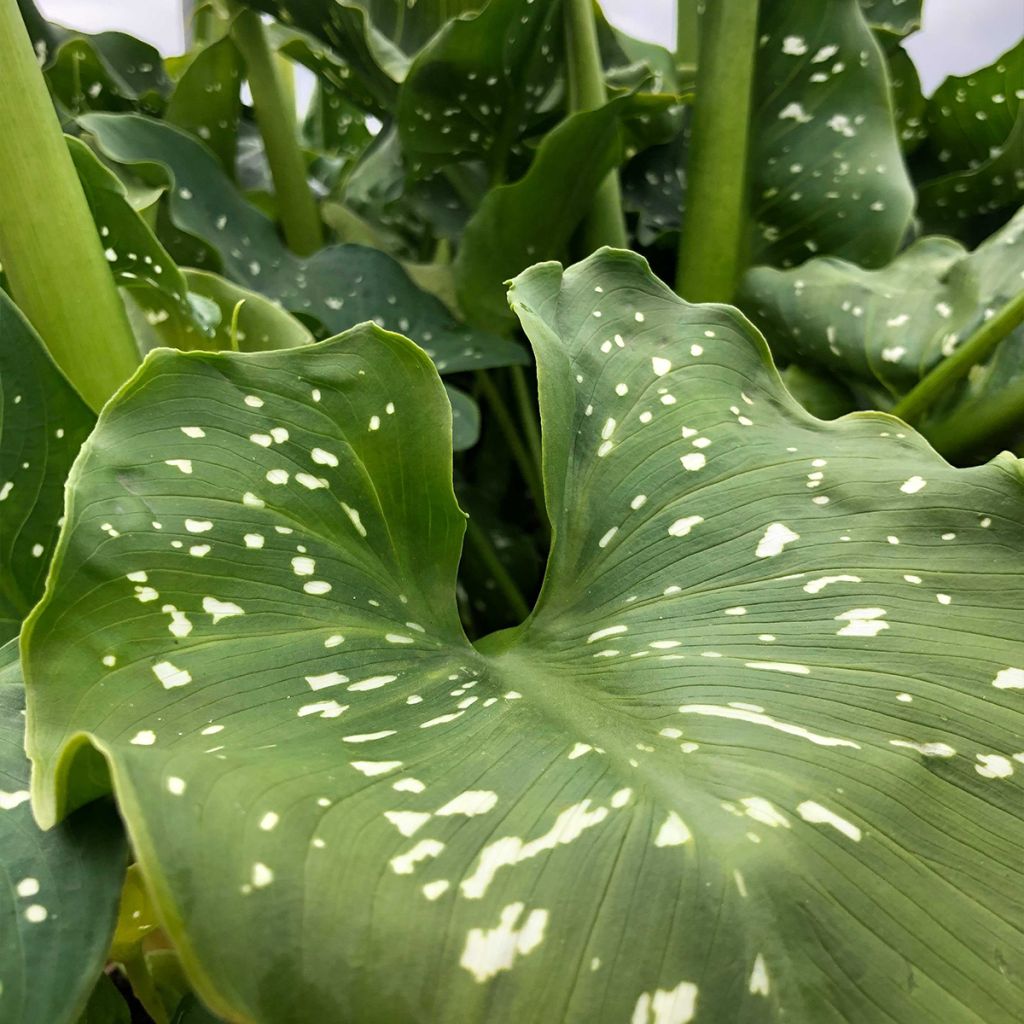

Zantedeschia aethiopica Himalaya - Arum-lily
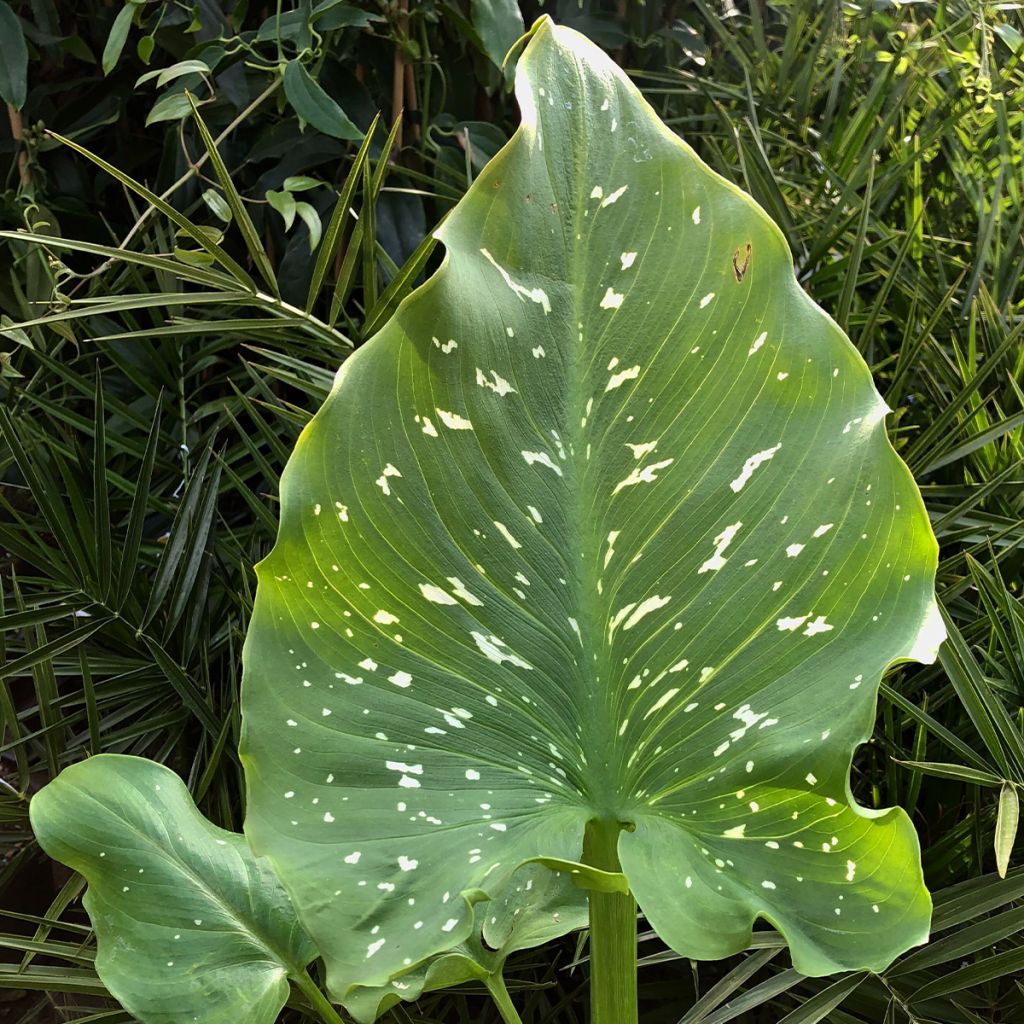

Zantedeschia aethiopica Himalaya - Arum-lily
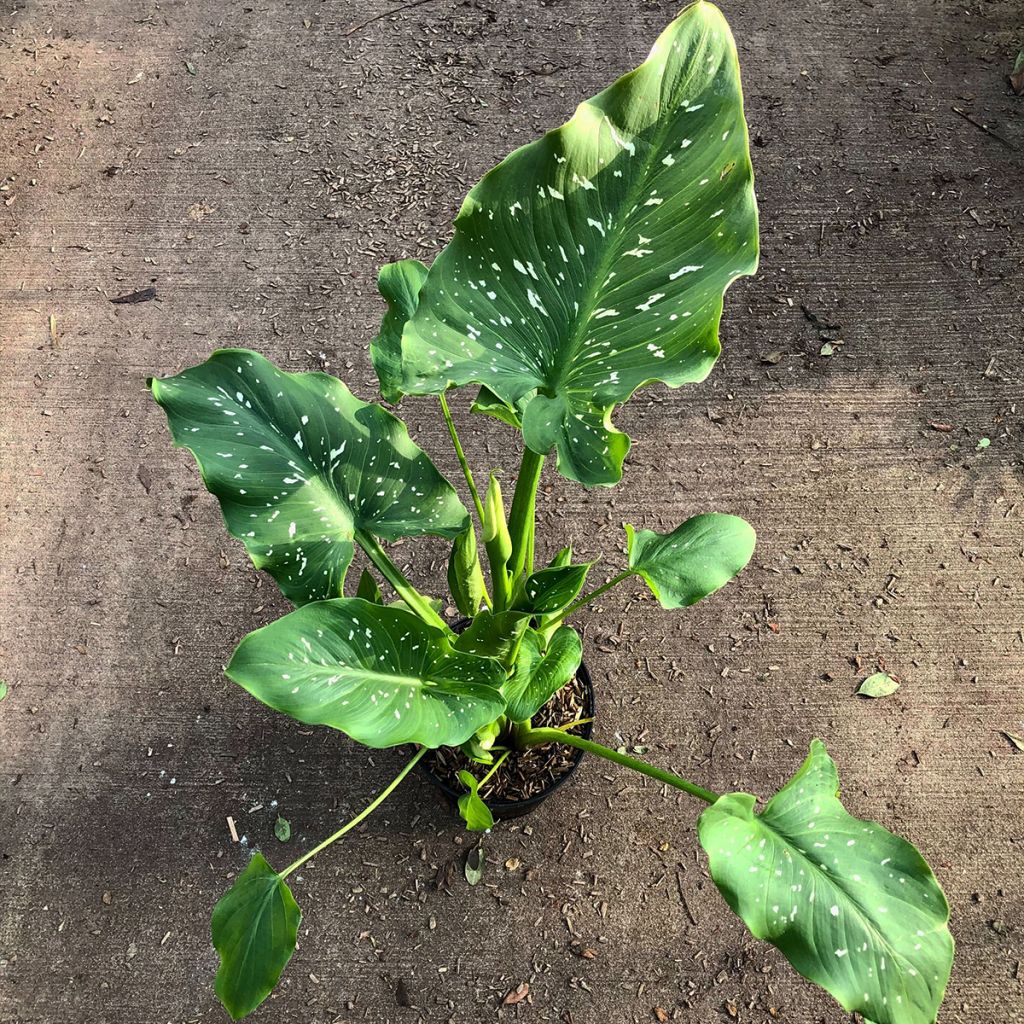

Zantedeschia aethiopica Himalaya - Arum-lily
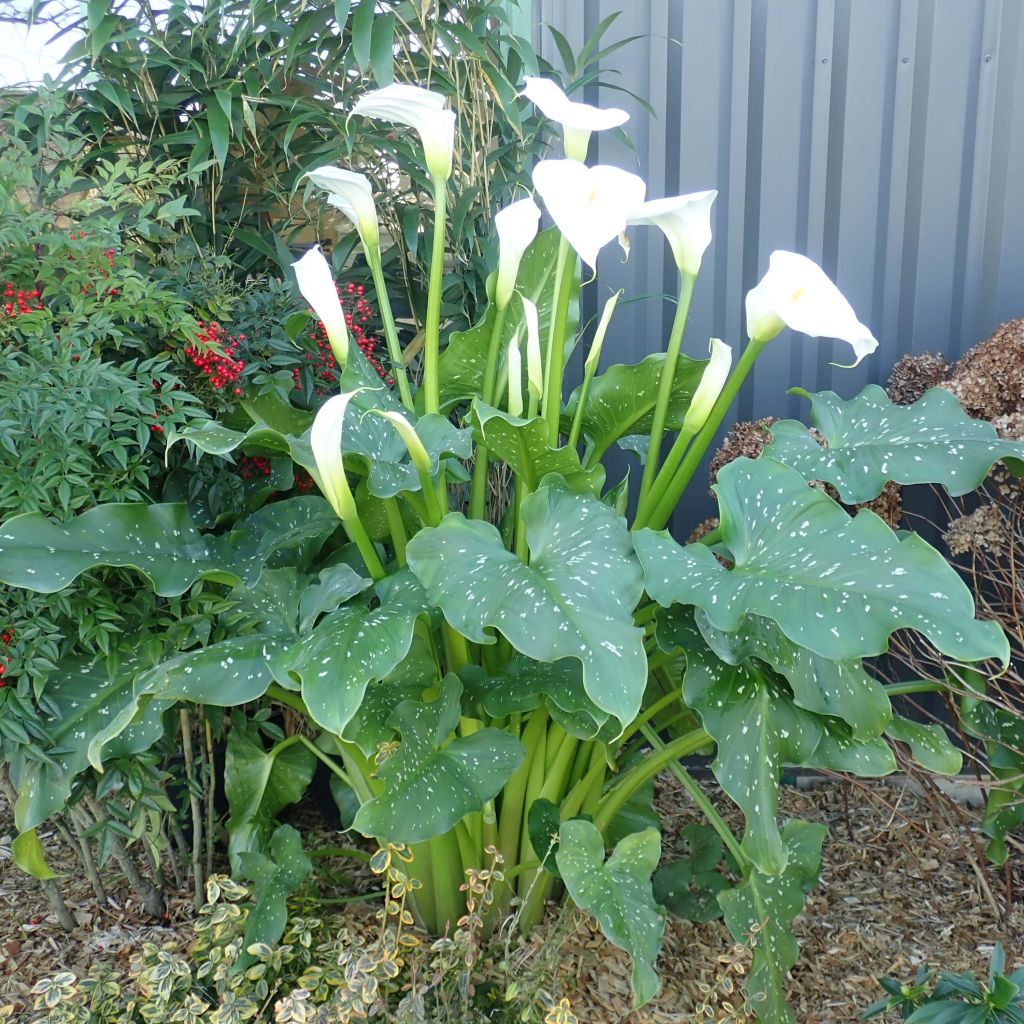

Zantedeschia aethiopica Himalaya - Arum-lily
Zantedeschia aethiopica Himalaya - Arum-lily
Zantedeschia aethiopica Himalaya
Calla Lily, Arum Lily
Why not try an alternative variety in stock?
View all →This plant carries a 6 months recovery warranty
More information
We guarantee the quality of our plants for a full growing cycle, and will replace at our expense any plant that fails to recover under normal climatic and planting conditions.
From €5.90 for pickup delivery and €6.90 for home delivery
Express home delivery from €8.90.

Does this plant fit my garden?
Set up your Plantfit profile →
Description
Zantedeschia aethiopica 'Himalaya' is a giant variety of Ethiopian arum, with spectacular vegetation adorned from spring to summer with large cone-shaped white flowers that can rise up to 2m (7ft) from the ground. It also bears beautiful undulating and glossy foliage, delicately mottled with white on a dark green background. It is perfect at the edge of water points or in humid beds. Its beautiful flowers will last a long time in bouquets. Hardy to -7°C (19.4°F), this perennial should be protected or removed in colder areas.
Originating from South Africa, particularly from Transvaal, the Ethiopian arum has become naturalised worldwide. It has given rise to some cultivars, including 'Himalaya', which is still very difficult to find in horticultural trade. It is an herbaceous perennial plant with a tuberous rhizome. It belongs to the Araceae family. An abundance of long-petioled leaves emerge from its stump in spring. They develop a very wide, sagittate, glossy, dark green lamina, displaying small white spots. The plant quickly forms imposing clumps, easily exceeding 1.2m (4ft) in foliage height, 1.8m (6ft) in flowering height (sometimes up to over 2m (7ft)), and at least 1m (3ft) wide. Flowering occurs from May to October, in successive waves if the plant does not lack water. This flowering can be easily advanced by greenhouse forcing. The magnificent inflorescences are composed of a pale-yellow spadix surrounded by a white flaring spathe, whose velvety texture mixes with the rough touch of parchment. Their subtle fragrance of aniseed and rice powder is noticeable when up close. If the soil is dry in summer, the foliage dries up and the plant enters dormancy. In consistently moist to wet soil, vegetation will be destroyed by the first frost.
Arums are making a comeback. Their strong presence is welcome in contemporary, exotic, or cottage gardens. Their generous clumps enhance the edges of well-designed basins and the back of beds in moist soil. They also create beautiful potted displays. Zantedeschia aethiopica 'Himalaya' can even be grown under 20 to 30cm (8 to 12in) of water during the growing season. Planted en masse or isolated near a walkway or porch, the Ethiopian arum pairs well with peonies, daylilies, delphiniums, and wet soil ferns (Osmunda regalis, Matteucia struthiopteris).
Report an error about the product description
Zantedeschia aethiopica Himalaya - Arum-lily in pictures


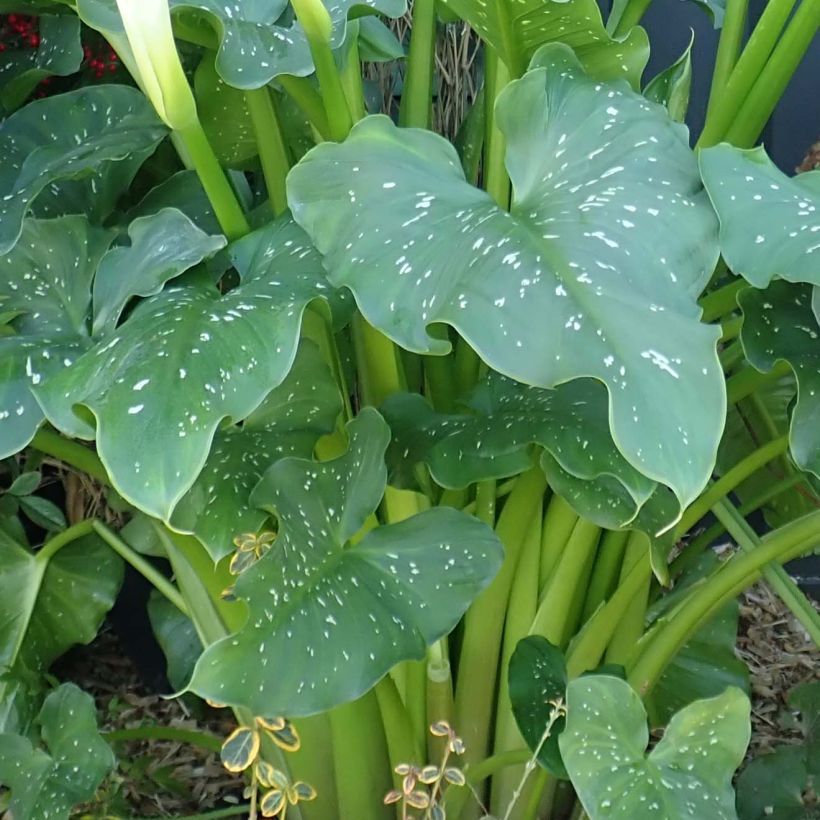

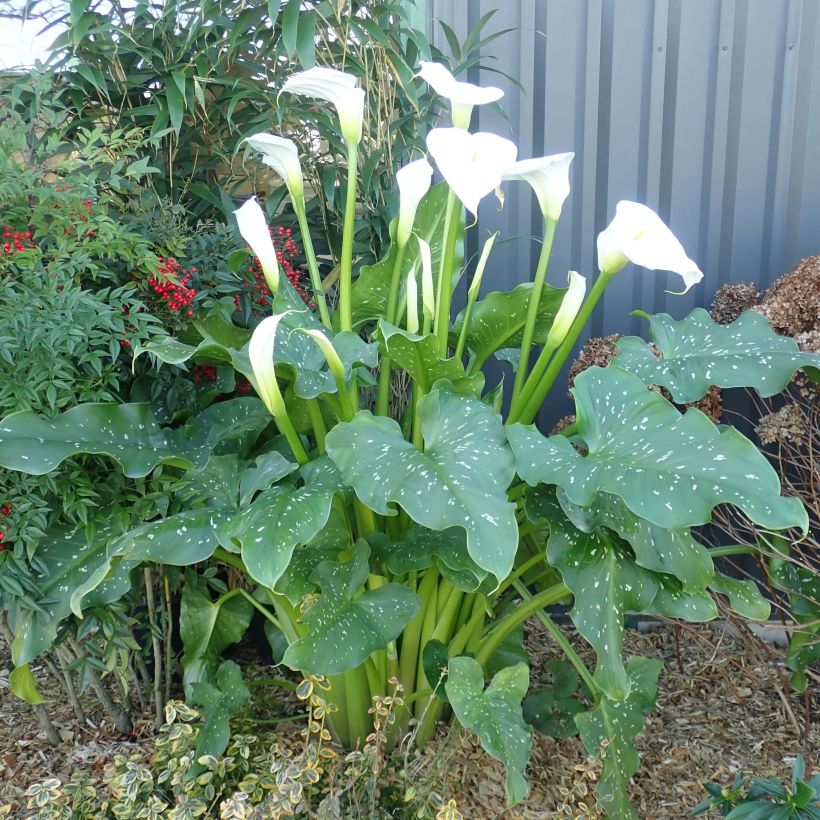

Plant habit
Flowering
Foliage
Botanical data
Zantedeschia
aethiopica
Himalaya
Araceae
Calla Lily, Arum Lily
Cultivar or hybrid
Other Arums
Planting and care
Plant in good garden soil enriched with potting soil and well-decomposed compost. Choose moist and deep soil, even saturated. Place it in a sunny exposure in cool climates. Place it in partial shade in hotter regions, avoiding scorching sun which could cause burns on the foliage. In a pot, it should be watered every evening in summer and will require regular fertiliser. Excess limestone can cause slight yellowing of the leaves, which will not endanger the plant.
All parts of the plant are toxic if ingested.
Slugs and snails enjoy feasting on the leaves, as do some butterfly caterpillars such as Psychidae.
The hardiness of this plant is around -7°C (19.4°F) at minimum. Protection is essential in winter. Place a thick mulch on the stumps that you can cover with a waterproof tarp. Excessive moisture, combined with cold, would be fatal to the plant.
Planting period
Intended location
Care
-
, onOrder confirmed
Reply from on Promesse de fleurs
Haven't found what you were looking for?
Hardiness is the lowest winter temperature a plant can endure without suffering serious damage or even dying. However, hardiness is affected by location (a sheltered area, such as a patio), protection (winter cover) and soil type (hardiness is improved by well-drained soil).

Photo Sharing Terms & Conditions
In order to encourage gardeners to interact and share their experiences, Promesse de fleurs offers various media enabling content to be uploaded onto its Site - in particular via the ‘Photo sharing’ module.
The User agrees to refrain from:
- Posting any content that is illegal, prejudicial, insulting, racist, inciteful to hatred, revisionist, contrary to public decency, that infringes on privacy or on the privacy rights of third parties, in particular the publicity rights of persons and goods, intellectual property rights, or the right to privacy.
- Submitting content on behalf of a third party;
- Impersonate the identity of a third party and/or publish any personal information about a third party;
In general, the User undertakes to refrain from any unethical behaviour.
All Content (in particular text, comments, files, images, photos, videos, creative works, etc.), which may be subject to property or intellectual property rights, image or other private rights, shall remain the property of the User, subject to the limited rights granted by the terms of the licence granted by Promesse de fleurs as stated below. Users are at liberty to publish or not to publish such Content on the Site, notably via the ‘Photo Sharing’ facility, and accept that this Content shall be made public and freely accessible, notably on the Internet.
Users further acknowledge, undertake to have ,and guarantee that they hold all necessary rights and permissions to publish such material on the Site, in particular with regard to the legislation in force pertaining to any privacy, property, intellectual property, image, or contractual rights, or rights of any other nature. By publishing such Content on the Site, Users acknowledge accepting full liability as publishers of the Content within the meaning of the law, and grant Promesse de fleurs, free of charge, an inclusive, worldwide licence for the said Content for the entire duration of its publication, including all reproduction, representation, up/downloading, displaying, performing, transmission, and storage rights.
Users also grant permission for their name to be linked to the Content and accept that this link may not always be made available.
By engaging in posting material, Users consent to their Content becoming automatically accessible on the Internet, in particular on other sites and/or blogs and/or web pages of the Promesse de fleurs site, including in particular social pages and the Promesse de fleurs catalogue.
Users may secure the removal of entrusted content free of charge by issuing a simple request via our contact form.
The flowering period indicated on our website applies to countries and regions located in USDA zone 8 (France, the United Kingdom, Ireland, the Netherlands, etc.)
It will vary according to where you live:
- In zones 9 to 10 (Italy, Spain, Greece, etc.), flowering will occur about 2 to 4 weeks earlier.
- In zones 6 to 7 (Germany, Poland, Slovenia, and lower mountainous regions), flowering will be delayed by 2 to 3 weeks.
- In zone 5 (Central Europe, Scandinavia), blooming will be delayed by 3 to 5 weeks.
In temperate climates, pruning of spring-flowering shrubs (forsythia, spireas, etc.) should be done just after flowering.
Pruning of summer-flowering shrubs (Indian Lilac, Perovskia, etc.) can be done in winter or spring.
In cold regions as well as with frost-sensitive plants, avoid pruning too early when severe frosts may still occur.
The planting period indicated on our website applies to countries and regions located in USDA zone 8 (France, United Kingdom, Ireland, Netherlands).
It will vary according to where you live:
- In Mediterranean zones (Marseille, Madrid, Milan, etc.), autumn and winter are the best planting periods.
- In continental zones (Strasbourg, Munich, Vienna, etc.), delay planting by 2 to 3 weeks in spring and bring it forward by 2 to 4 weeks in autumn.
- In mountainous regions (the Alps, Pyrenees, Carpathians, etc.), it is best to plant in late spring (May-June) or late summer (August-September).
The harvesting period indicated on our website applies to countries and regions in USDA zone 8 (France, England, Ireland, the Netherlands).
In colder areas (Scandinavia, Poland, Austria...) fruit and vegetable harvests are likely to be delayed by 3-4 weeks.
In warmer areas (Italy, Spain, Greece, etc.), harvesting will probably take place earlier, depending on weather conditions.
The sowing periods indicated on our website apply to countries and regions within USDA Zone 8 (France, UK, Ireland, Netherlands).
In colder areas (Scandinavia, Poland, Austria...), delay any outdoor sowing by 3-4 weeks, or sow under glass.
In warmer climes (Italy, Spain, Greece, etc.), bring outdoor sowing forward by a few weeks.

































